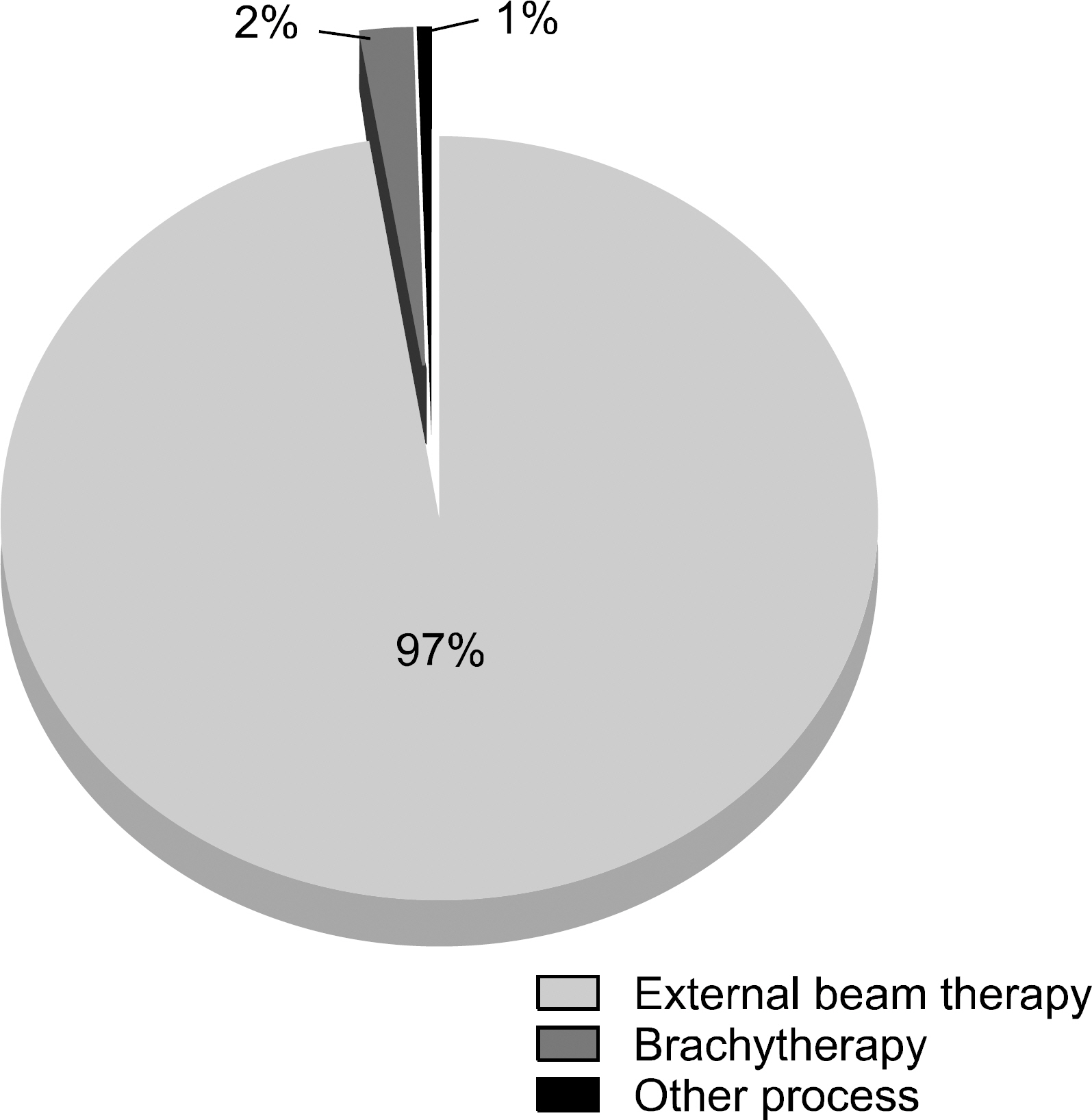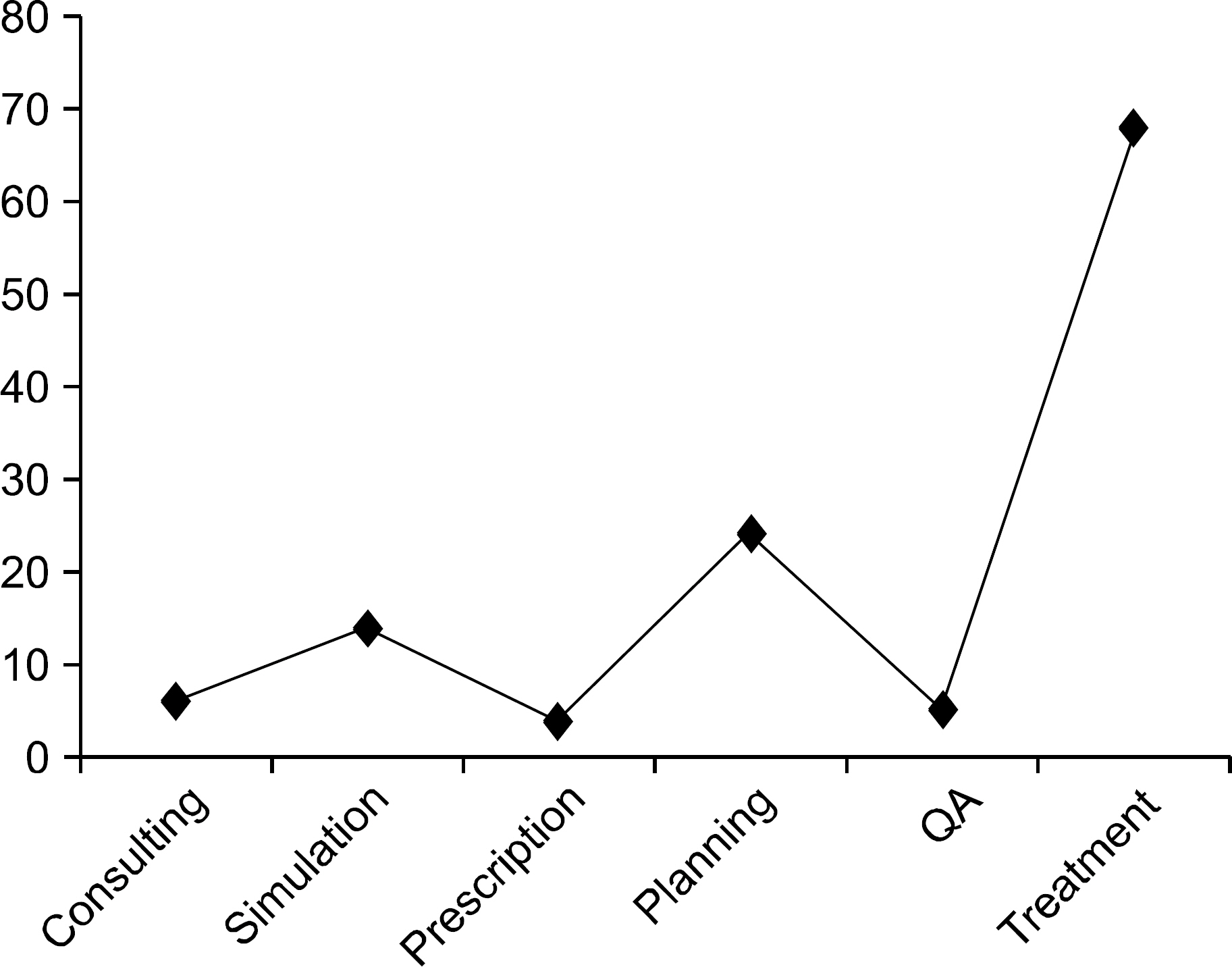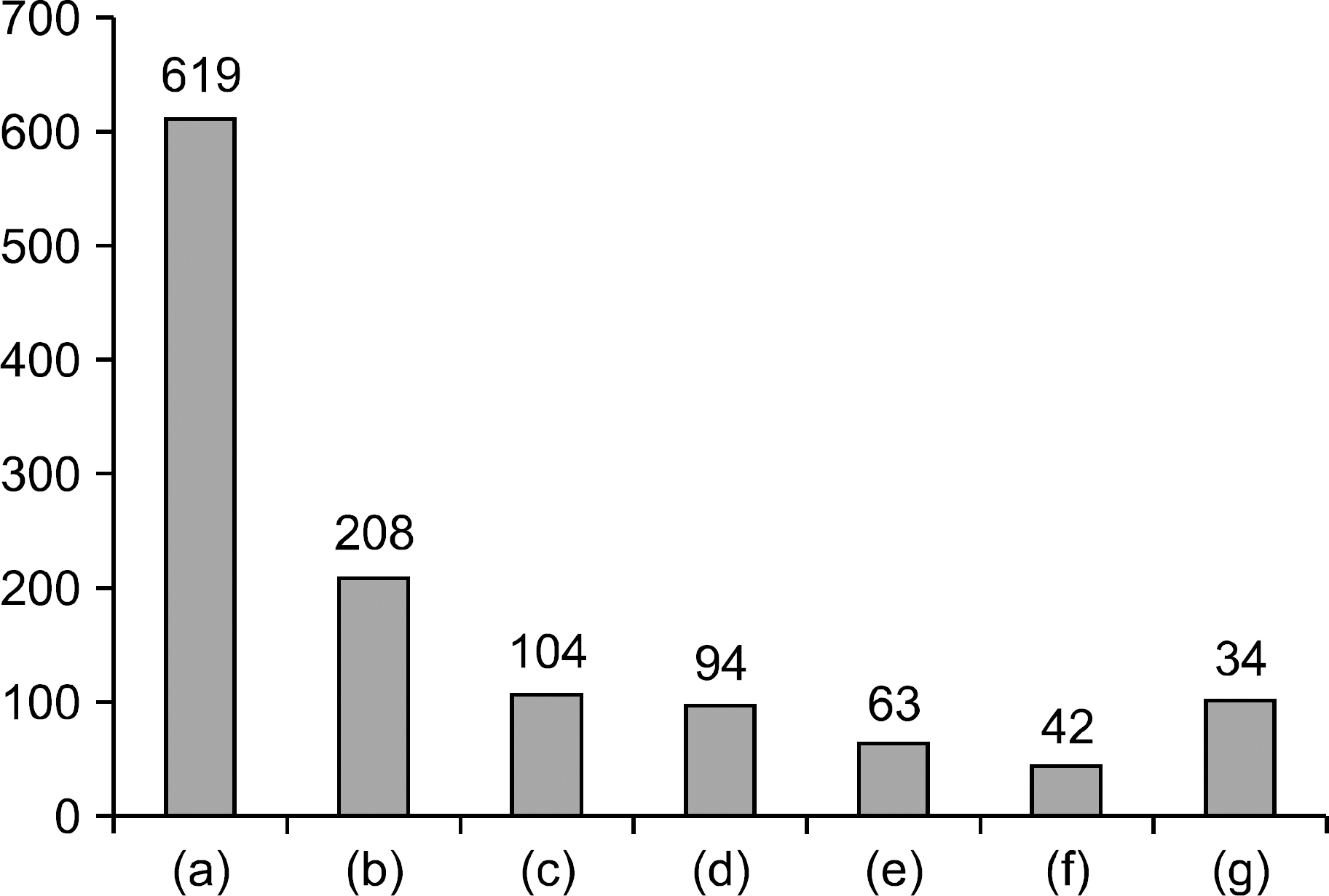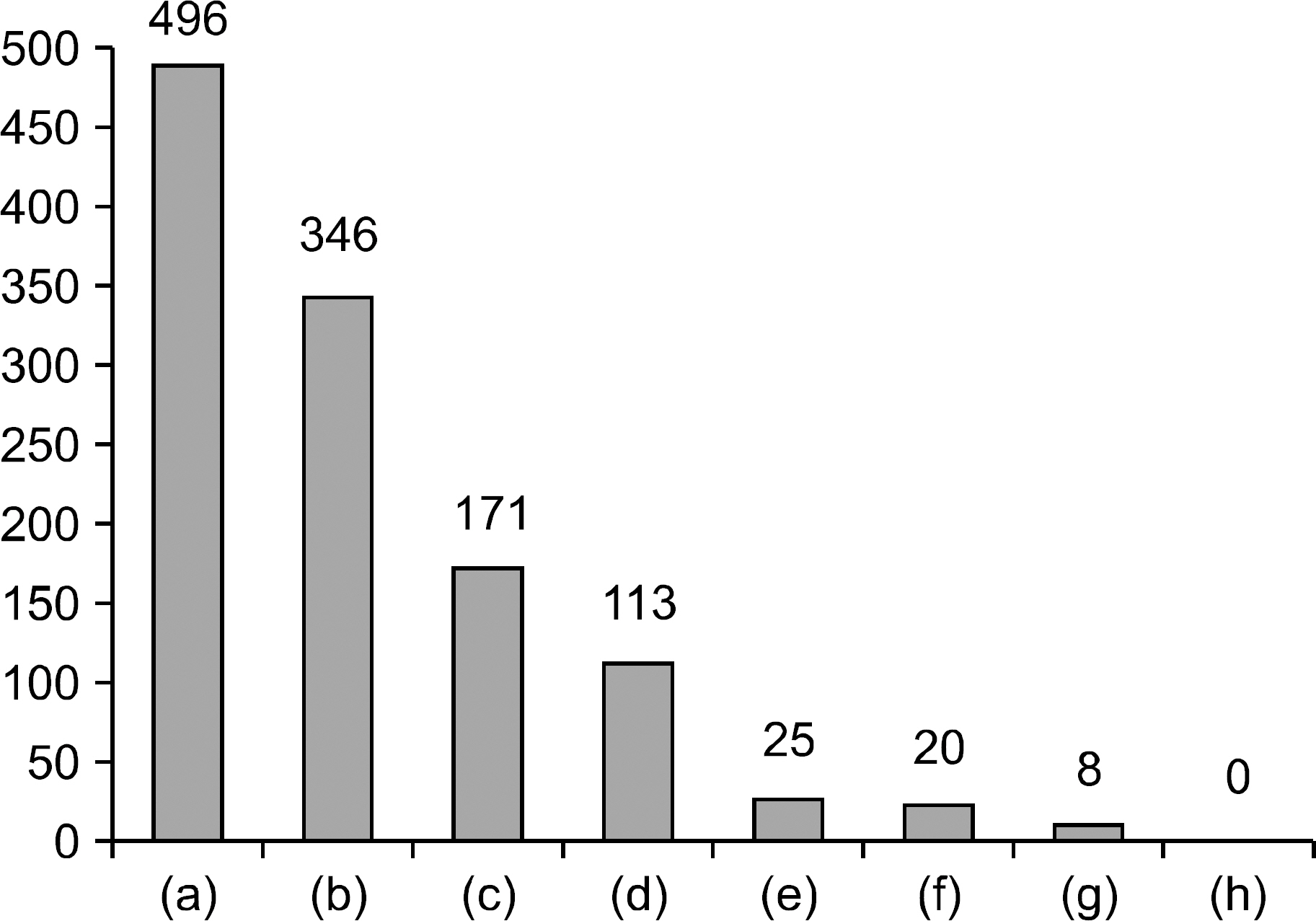Prog Med Phys.
2014 Dec;25(4):298-303. 10.14316/pmp.2014.25.4.298.
Radiotherapy Incidents Analysis Based on ROSIS: Tendency and Frequency
- Affiliations
-
- 1Department of Radiologic Science, Korea University, College of Health Science, Korea University, College of Health Science, Seoul, Korea.
- 2Department of Bio-Convergence Engineering, Korea University, College of Health Science, Korea University, College of Health Science, Seoul, Korea.
- 3Department of Radiation Oncology, Kyung Hee University Hospital at Gangdong, Seoul, Korea. joocheck@gmail.com
- KMID: 2315770
- DOI: http://doi.org/10.14316/pmp.2014.25.4.298
Abstract
- In this study, we examine the trends and types of incidents frequently occur during radiation therapy by using the data from the radiation oncology safety information system (ROSIS), according to discovery method explores the development direction of future research accident cause factor control method. This study was carried out analysis of incident data in ROSIS nearly 1163 cases in last 11 years from 2003 to 2013. We categorized into treatment methods, found the time, discoverer of occupations and finding ways to analyze the data. Then, we calculate the percentage and the classification for each item. About 1163 cases of incident cases including the near miss cases, external radiation therapy, brachytherapy and other were 97%, 2% and 1%. In the case was improperly planned dose delivery was 44% (497 cases) which 429 cases (86%) was found before 3 fractions and 13 cases were found after 11 fractions. The investigation was found to be distributed in various a found times. Approximately 42% of found time was during treatment and 29% of patients were found the problem during inspection chart. Occupation to discover the most radiation accidents was the radiation therapist (53%) who works in treatment room. Among 1163 incidence cases, 24% cases were found the accident before the treatment, therefore most of accident were found after of during the treatment (70%, 813 cases). This trend is acquired through ROSIS analysis, is expected to be not significantly different in the case of Korea, so it is necessary more diverse and systematic research for the prevention and early detection by using the ROSIS data.
MeSH Terms
Figure
Reference
-
References
1. Damien C. Weber, Milan Tomsej, Christos Melidis, Coen W. Hurkmans: QA makes a clinical trial tronger: Evidence-based medicine in radiation therapy. Radiation and Oncology. 105:2–8. 2012.2. WHO: Radiotherapy Risk Profile. World Health Organization (. 2008.3. Sang Hoon Lee, Juree Kim, Sam Ju Cho, Kwang Hwan Cho, Chunil Lim, Hyeog Ju Kim, Hyundo Huh, Dong Oh Shin, Sooil Kwon, Jinho Choi: Analysis and Investigation for the Status of Radiation Therapy QA in Korea. Korean Journal of Medical Physics 2010 Jun;. 21(2):223–231.4. Woo Sang Ahn, Byung Chul Cho: Intensity Modulated Radiation Therapy Commissioning and Quality Assurance: Implementation of AAPM TG119. Korean Journal of Medical Physics 2011 Jun;. 22(2):99–105.5. Jean-Pierre Bissonnette, Gaylene Medlam: Trend analysis of radiation therapy incidents over seven years. Radiotherapy and Oncology. 96:139–144. 2010.6. Israelski. Edmond W. Muto: Human Factors Risk Management as a Way to Improve Medical Device Safety: A Case Study of the Therac 25 Radiation Therapy System. Jt Comm J Qual Saf. 30:689–95. 2004.7. Brenda G. Clark, Robert J. Brown, Jodi L. Ploquin, Anneke L. Kind, Laval Grimard: The management of radiation treatment error through incident learning. Radiotherapy and Oncology. 95:344–349. 2010.8. Tai Keung Yeung, Karen Bortolotto, Scott Cosby, Margaret Hoar, Ernst Lederer: Quality assurance in radiotherapy: evaluation of errors and incidents recorded over a 10 year period. Radiotherapy and Oncology. 74:283–291. 2005.9. Edidiong Ekaette. Robert C. Lee, David L. Cooke, Sandra Iftody, Peter Craighead: Probabilistic Fault Tree Analysis of a Radiation Treatment System. Risk Analysis. 27:1395–410. 2007.10. Saiful Huq. Benedick A. Fraass, Peter B. Dunscombe, et al: A Method for evaluating quality assurance needs in radiation therapy. Radiation Oncology Biol. Phys. 71:S170–3. 2008.11. Ola Holmberg, Brendan McClean: Preventing treatment errors in radiotherapy by identifying and evaluating near misses and actual incidents. Journal of Radiotherapy in Practice. 3:13–25. 2002.12. Sung Ho Park: Establishing Incident management system to enhance radiation safety. Nuclear Safety and Security Commission (. 2012.13. Joanne Cunningham: Radiation Oncology Safety Information System (ROSIS) – A Reporting and Learning System for Radiation Oncology. (. 2011.14. Joanne Cunningham, Mary Coffey, Tommy Knoos, Ola Holmberg: Radiation Oncology Safety Information System (ROSIS) – Profiles of participants and the first 1074 incident reports. Radiotherapy and Oncology. 97:601–607. 2010.15. AAPM Task Group 142 report: Quality assurance of medicalacclerators. Eric E. Klein, Joseph Hanley, John Bayouth, et al (. 2009.16. James Reason: Human error-models and management. British Medical Journal. 320:768–770. 2000.
- Full Text Links
- Actions
-
Cited
- CITED
-
- Close
- Share
- Similar articles
-
- A Study on Video Analysis of Sports Injuries and Management in Korean Professional Football
- Categorizing accident sequences in the external radiotherapy for risk analysis
- Chromosomal Aberration in Fractionated Radiotherapy
- Factor Associated with Injury Related to Home Mechanical Ventilation in General Ward Patients: A Retrospective Study
- Tendency and Network Analysis of Diet Using Big Data







